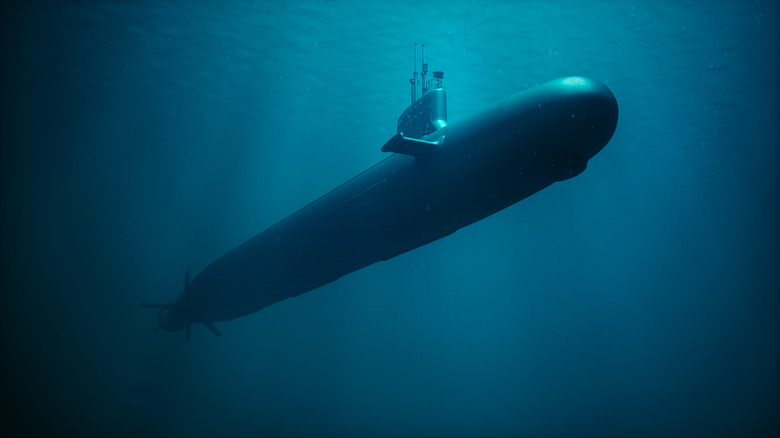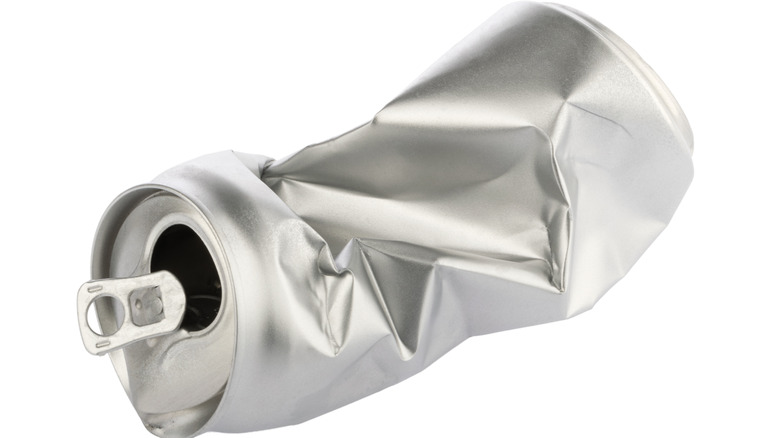What Really Happens When A Sub Implodes
With the Titan Submersible Disaster hitting the headlines, you may wonder what exactly happens when a submarine implodes. Unlike an explosion, which is a rapid release of energy, an implosion involves a large force crushing an object incapable of withstanding that force. It is usually the result of a significant pressure differential between the inside of a vessel and the area outside.
At sea level, people are experiencing one atmosphere (14.7 PSI) of pressure. This is due to the "weight" of the air in the atmosphere pressing down on you. If you dive into the ocean, you'll experience more significant pressure as water is far denser than air. At high altitudes, the low air pressure may cause breathing difficulties. Dive deep into the ocean, and the weight of all that water can crush you.
You may be aware of "uncontrolled decompression." You may have seen a villain get sucked through the door of an airplane or blasted out of an airlock in a movie. It also happens in real life, as an unfortunate SouthWest Airlines passenger discovered. That's essentially the opposite of a submarine imploding, but it demonstrates the consequences of an unintended pressure change at a speed our brains can comprehend. However, in the case of an implosion, pressure isn't being lost — it's forcing its way in. And the forces involved tend to be much greater, with one atmosphere of pressure being added every 33 feet.
The forces involved are very extreme
Unlike planes and space shuttles, which are designed to keep a pressure of around one atmosphere (14.7 pounds per square inch) contained when the outside forces are lower — a sub is intended to do the opposite. It fends off external pressures, so whatever is within can stay at the same pressure you would experience at sea level. A space shuttle will, at worst, have to deal with one atmosphere's worth of pressure differential, while a submersible will have to contend with many times that. To use one of the most extreme examples available, Titanic director James Cameron's journey to the bottom of the Challenger Deep saw his craft fending off pressures of up to 15,979 PSI, or just about 1,087 atmospheres.
An implosion occurs when a vessel can no longer handle the pressure surrounding it. This can happen for a few reasons. In the case of a submarine, diving beyond the depth it is rated for can result in catastrophic hull failure and subsequent implosion. If you grab a balloon and squeeze, the balloon isn't strong enough to handle the forces you are exerting on it, and as a result, it pops.
On a basic level, that is essentially what happens to a sub that dives beyond its "collapse depth." Catastrophic failures could also occur without a sub hitting its collapse depth. Any damage or flaws in the vessel's construction may create a weak point and cause the hull's failure.
What does an implosion look like?
At extreme depths, an implosion isn't exactly a "blink and you'll miss it" type affair. It's much faster than that. A pressure vessel would go from fine and functional to a crushed piece of wreckage faster than your brain can comprehend what has happened. If you're unfortunate enough to be inside an imploding vessel, it will be over before you know what's going on.
In the case of Titan, a catastrophic hull failure may look a little different. A large section of the vessel was made of carbon fiber, which doesn't deform like metal. Instead, the material likely fractured and disintegrated once its integrity was compromised. While the loss of the USS Thresher, an imploded U.S. Navy sub from the '60s, resulted in a debris field, the vessel itself broke into three large pieces, and the hull didn't disintegrate.
Unlike the movies, a failure is unlikely to be preceded by a crack spider-webbing its way across a porthole. Because of the forces involved, any failure would be instantaneous. The consequences for anyone inside an imploding vessel are equally swift. Organic matter is not designed to stand up to extreme forces, and with an almost instantaneous pressure change from one to hundreds of atmospheres — death is likely to happen before a human central nervous system can even register that something has gone wrong.

